Challenge your students to identify different slow changes to Earth’s surface with this matching game designed for year 4 and 5 students.
How Is Weathering Different From Erosion?
The incredible forces of nature work in amazing ways to shape our Earth’s surface. Two of the most important processes that play a significant role in this are weathering and erosion. While they are related, they have distinct differences that contribute to the dynamic landscape we see around us.
Weathering is an important first step that involves the breakdown of rocks and minerals into smaller pieces, or even chemical alterations, without the need to relocate. This process takes place due to several natural forces, such as temperature changes, pressure, water freezing and thawing and chemical reactions. Weathering is essential as it prepares rocks for change, making them more susceptible to erosion.
Erosion, on the other hand, is responsible for the transportation of weathered rock and soil particles from one location to another. This is achieved through natural forces like wind, water, ice and gravity, which carry these weathered materials and reshape landscapes by wearing away surfaces and moving sediments to new locations.
In simpler terms, weathering is the process that breaks rocks down into smaller pieces or changes their composition, while erosion is responsible for carrying these smaller pieces to new places. Together, these processes work harmoniously to create the stunning landscapes we see today. By understanding the role of weathering and erosion, we can better appreciate the beauty of our planet and the natural forces that shape it.
What Is Deposition in Science?
So, now that you know about weathering and erosion, what about the last part of the process? Deposition is the settling of sediments eroded and transported by natural forces. It leads to diverse landforms like river deltas, sand dunes and sedimentary rock layers. When the energy of the transporting agent decreases, like a river slowing down, it drops the sediment it was carrying and creates new landscapes.
Weathering, Erosion and Deposition Examples
Giving your students ample opportunities to look at different examples of the W.E.D. process is an important part of shaping their understanding of how Earth’s surface changes over time. Teach Starter has created a matching game for your year 4 and 5 students to strengthen their understanding of this Earth Sciences topic.
This teacher-created download comes with the following:
- A set of instructions
- 12 picture cards
- 12 vocabulary cards
- 12 definition cards
- Recording sheet
- Answer key
To play this activity:
- Shuffle the cards. Place the cards face down in equal rows (6×6).
- Player 1 turns over three cards. If they create a matching set of a vocabulary word, definition and picture, they keep those cards and record them on their sheet.
- If they do not create a matching set, they must turn the cards back over.
- Play continues until every set has been collected.
Download, Print and Play!
If you are ready for your students to practise identifying examples of weathering, erosion and deposition, head on over to the green download button! Here, you will find the quick-print PDF file or the editable Google Slides document. If choosing the Google Slides option, please note that you will first be prompted to make a copy of the resource to your personal drive before accessing it.
Consider printing the playing cards on thick card and laminating them to ensure they can be used for many years to come!
This resource was created by Brittany Kellogg, a Teach Starter Collaborator.
More Resources for Your Weathering, Erosion and Deposition Lessons!
Don’t stop there! We’ve got more activities and resources that cut down on lesson planning time:
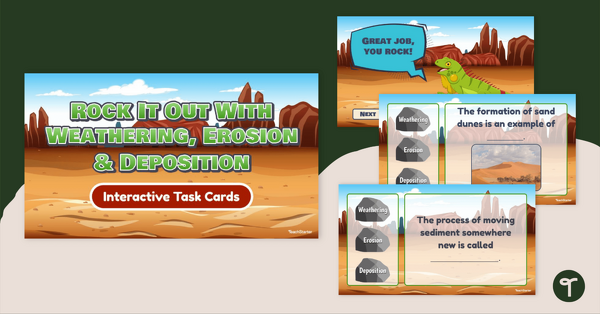
teaching resource
Rock It Out With Weathering, Erosion and Deposition – Interactive Task Cards
Dive into the fascinating world of Earth’s transformations! Download this set of interactive task cards to review weathering, erosion and deposition concepts with your students.
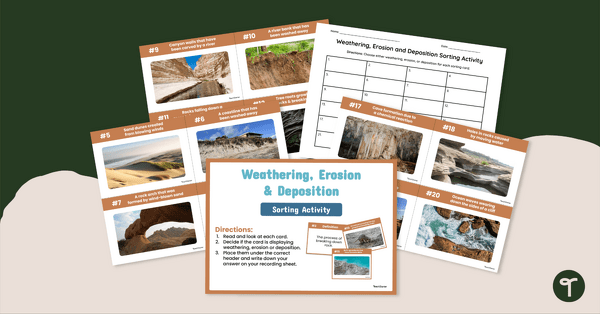
teaching resource
Weathering, Erosion and Deposition – Sorting Activity
Categorise examples of deposition, weathering and erosion with this 24-card sorting activity.
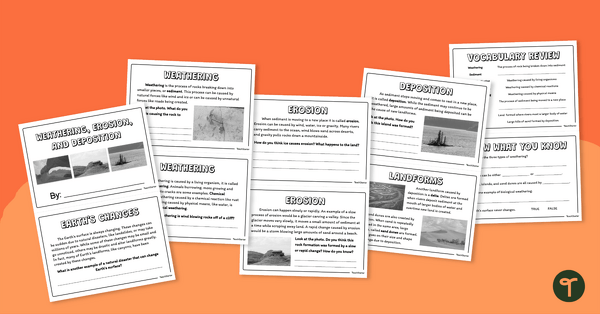
teaching resource
Weathering, Erosion and Deposition Mini-Book
Introduce your students to the different slow changes to Earth’s surface with a printable mini-book designed for year 4 and 5 students.
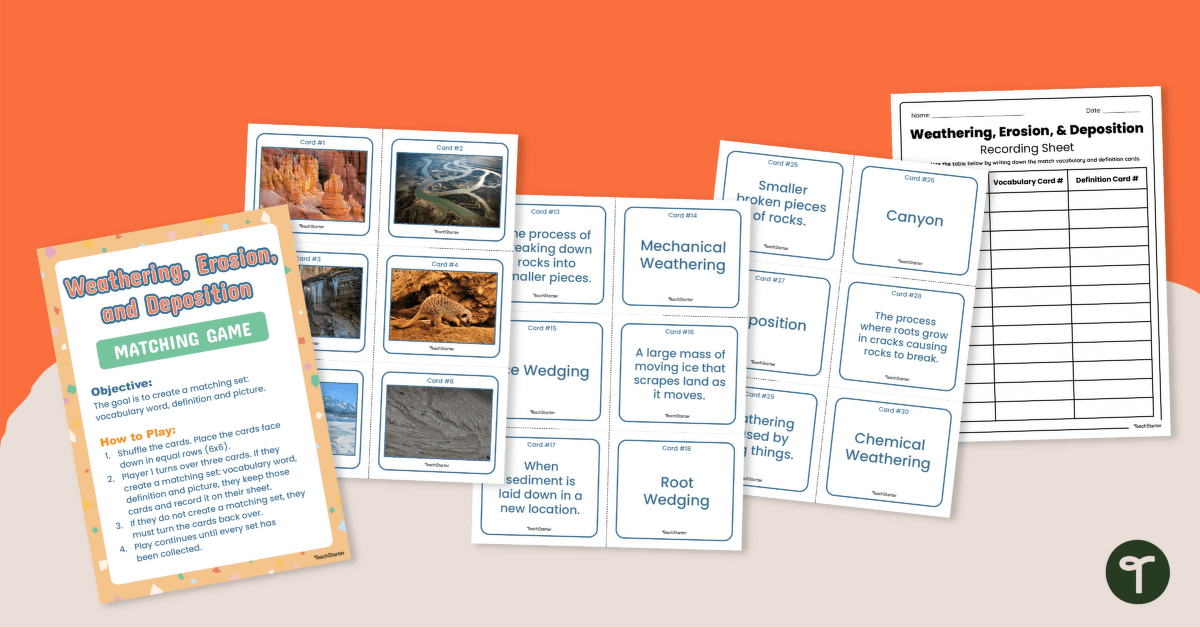

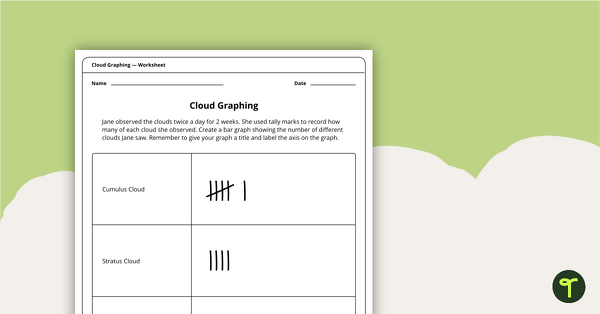

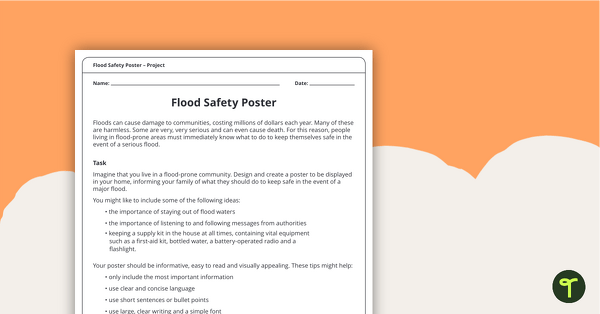
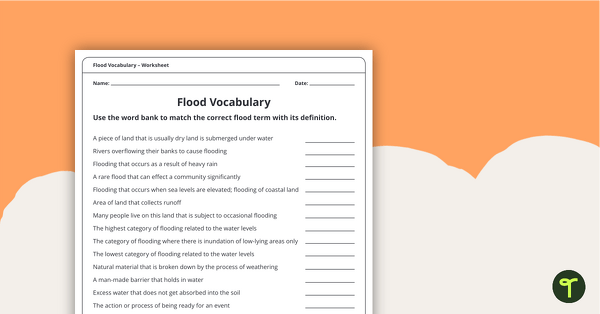
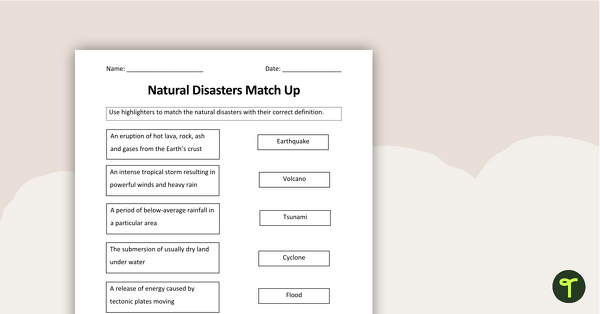
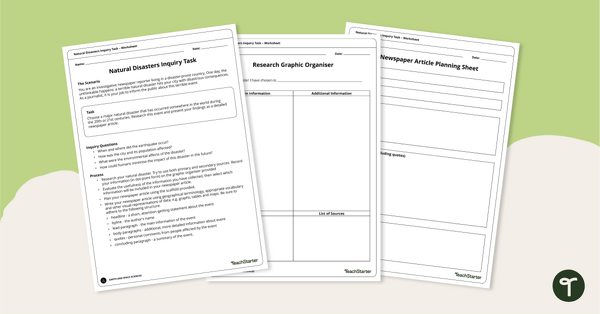

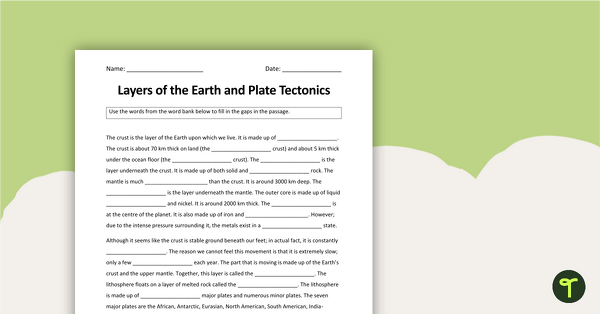
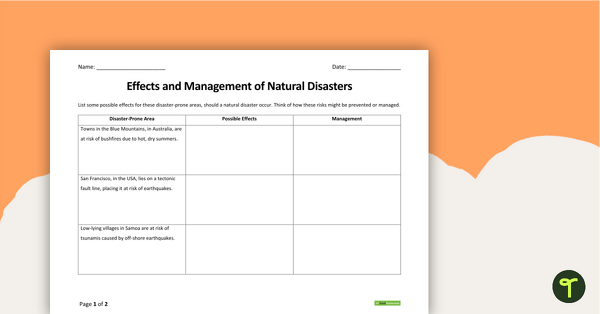
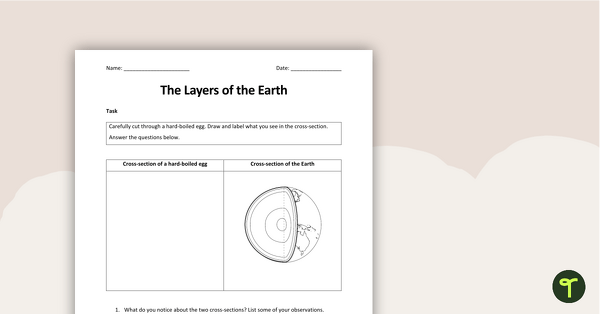
0 Comments
Write a review to help other teachers and parents like yourself. If you'd like to request a change to this resource, or report an error, select the corresponding tab above.